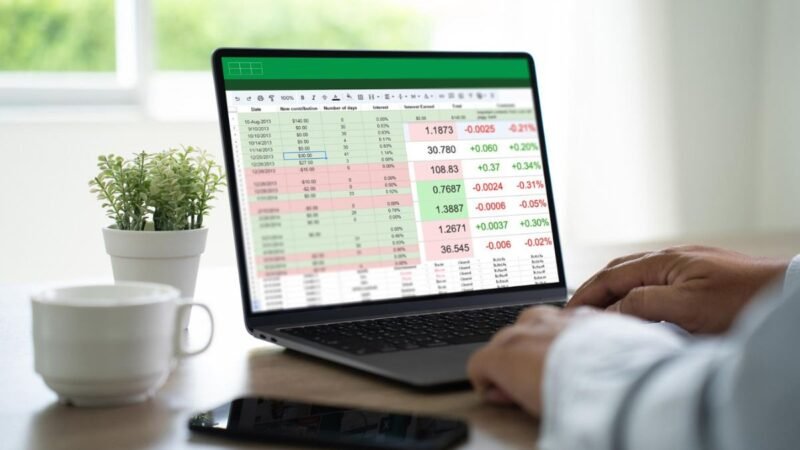How To Improve Energy Driven Ongoing Businesses?

Every day, thousands of new businesses and operations take over the region, enforcing dynamic drills, competent workforce, and organizational policies. One of the major concerns from ongoing businesses is the skyrocketing prices of energy supplies and other utilities. With Utility Bidder, one can get affordable and green energy at the best-offered market competitive pricing. Whether a small-scale business startup or a full-fledged business model, energy prices and tariffs dent investors’ overall budget, finances, profit, and savings. For the past decade, a scientist has emphasized the need for green energy due to the limited reserves of hydrocarbons and fossil fuels in nature.
Energy-driven businesses such as the textile industry, production industry, heavy metal manufacturing industry, and tourism consume about 65% of the world’s energy resources. Be it any type of energy resource, it is required in significant volume to run engines, machines, turbines, and other appliances. Businesses are not limited to field operations and industrial areas. Every business has its retail sales office, workplace, and other holdings to conduct daily business trades, customer service, audit, review, etc.
While calculating the volume of consumed energy, engineers and financial modelers need to consider the energy consumed by office spaces and daily accessories. With the influx of digital accounts, business portals, and user-friendly auditing tools, one can sit back and view all expenses and costs on their smartphone, tablet, and laptop screens. Moreover, the digitalized energy billing systems keep users updated about their energy consumption, tariffs, and other charges. Once you have clear statistical data in front of you, you can make solid decisions and cut down prices of overhead expenses that affect the overall loss or marginal difference at the end of quarter revenue, sales, profit, or targets.
Factors Affecting Energy Driven Businesses
Several factors affect the optimum efficiency of ongoing businesses. However, the best industrialist or an investor knows how to perform in these medieval situations and demonstrates an energy-compliant approach. Cost of Tariffs, business taxes, energy prices, and wage rate affect businesses’ overall growth and development. Investors are likely to use renewable energy as the backup plan for their industrial zones and complexes because of the rising demand for an uninterrupted supply of business energies. Implementing energy-compliant plans is likely to mitigate the shortage of energy production and transportation costs.
Credit History and Scores
Be it an individual applying for loan applications or businesses signing up for new energy supplies and connection, their credit history and scores and taken into consideration by the authorities. Previous unpaid loans or tariffs are likely to hinder one’s business pace and overall development. When a business has under par credit score, it has to pay high tariffs against accountable energy supplies and other utilities. Every sitting government has its own industrial policies and criteria.
Overall Increase in Prices of Energy Supplies
Every energy-driven business aspires to buy energy and other essential utilities at a decent market rate. But, with the growing demand for energy supplies, prices are touching the sky limits, creating mismanagement and financial crises in industries and power-driven businesses. While planning for the future, analysts always keep a specific percentage of inflation or price hike, but while predicting the prices of energy supplies, one can’t be sure enough. Marginal differences in the rates of power supplies cause a massive difference in expenses and recovered amounts.
Unforeseeable Market Conditions
Many businesses operate according to ongoing market conditions and the overall growth of industries. Market conditions are closely related to governmental policies, initiatives, and overall working. If a power-driven business faces new tariffs and payable dues, it has to cut down its production costs to generate a substantial profit percentage.
Climatic and Weather Conditions
Take the example of Iceland or very cold areas of the world, where sunrays aren’t directed towards their surfaces, creating little or no natural daylight. One cannot invest in solar panels and depend upon renewable energy for mass production in these situations. Climatic and weather conditions influence businesses’ overall functioning and development. Moreover, climatic problems hinder the use of coal or gas-powered machines and engines, which are likely to close their efficiency during extreme winters.
Dense Energy Supply Network
With the increased industrial estates and business zones, every investor aspires to set up its own mills and production factories in pursuit of making good money. But unmonitored growth of industries tends to affect efficiencies of existing factories and industries in the market. The increased demand for gas supplies and energy burdens the business zone and affects the supply of natural gas and other utilities of residential areas. Every industry aspires to get an uninterrupted supply of business utilities; however, it’s impossible as every industry is waiting for its share in energy. The rising demand factor is impacting the production and supply of every industry, depending upon government-approved energy providers for the supply of energy.
How to Mitigate These Challenges and Factors Affecting Energy Driven Businesses?
As a seasoned industrialist, one should consider pre-evaluating business expenditures and overhead costs of energy supplies before every quarter or financial year. Moreover, it’s recommended to use authentic budgeting and planning tools to manage resources efficiently. If you are predicting price hikes or risks for the near future, try creating a comparative analysis that considers energy values and tariffs. In todays’ time, too, industrialists consider governmental policies and prices of energies before setting up industries or investing in any joint ventures.
The business community needs to present undivided attention towards using green or renewable energy production methods to mitigate energy challenges. Energy generated via renewable methods can be used as an alternative or backup power source. Implementing such energy-driven ideas will likely reduce business costs and overall spending on energy supplies. With time, industrialists, and businesses, can set up their renewable energy plants that generate ample electricity or power to energize machines and commercial business spaces. Considering the ongoing energy crisis, implementing green energy production concepts is imperative.
Also Read : KPI – Why Is It So Important?


